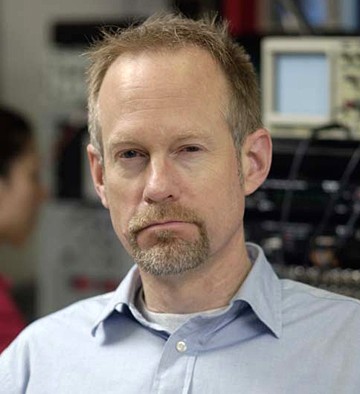Oct 27 2008
A team of Johns Hopkins University neuroscientists has discovered patterns of brain activity that may underlie our remarkable ability to see and understand the three-dimensional structure of objects.
 Charles E. Connor, associate professor in the Zanvyl Krieger Mind-Brain Institute at The Johns Hopkins University. (Credit: Will Kirk/JHU)
Charles E. Connor, associate professor in the Zanvyl Krieger Mind-Brain Institute at The Johns Hopkins University. (Credit: Will Kirk/JHU)
Computers can beat us at math and chess, but humans are the experts at object vision. (That’s why some Web sites use object recognition tasks as part of their authentication of human users.) It seems trivial to us to describe a teapot as having a C-shaped handle on one side, an S-shaped spout on the other and a disk-shaped lid on top. But sifting this three-dimensional information from the constantly changing, two-dimensional images coming in through our eyes is one of the most difficult tasks the brain performs. Even sophisticated computer vision systems have never been able to accomplish the same feat using two-dimensional camera images.
The Johns Hopkins research suggests that higher-level visual regions of the brain represent objects as spatial configurations of surface fragments, something like a structural drawing. Individual neurons are tuned to respond to surface fragment substructures. For instance, one neuron from the study responded to the combination of a forward-facing ridge near the front and an upward-facing concavity near the top. Multiple neurons with different tuning sensitivities could combine like a three-dimensional mosaic to encode the entire object surface. An article describing these findings appears in the November issue of Nature Neuroscience, available online here: http://www.nature.com/neuro/journal/vaop/ncurrent/full/nn.2202.html.
“Human beings are keenly aware of object structure, and that may be due to this clear structural representation in the brain,” explains Charles E. Connor, associate professor in the Zanvyl Krieger Mind-Brain Institute at The Johns Hopkins University.
In the study, Connor and a postdoctoral fellow, Yukako Yamane, trained two rhesus monkeys to look at a computer monitor while 3-D pictures of objects were flashed on the screen. At the same time, the researchers recorded electrical responses of individual neurons in higher-level visual regions of the brain. A computer algorithm was used to guide the experiment gradually toward object shapes that evoked stronger responses.
This evolutionary stimulus strategy let the experimenters pinpoint the exact 3-D shape information that drove a given cell to respond.
These findings and other research on object coding in the brain have implications for treating patients with perceptual disorders. In addition, they could inform new approaches to computer vision. Connor also believes that understanding neural codes could help explain why visual experience feels the way it does, perhaps even why some things seem beautiful and others displeasing.
“In a sense, artists are neuroscientists, experimenting with shape and color, trying to evoke unique, powerful responses from the visual brain,” Connor said.
As a first step toward this neuroaesthetic question, the Connor laboratory plans to collaborate with the Walters Art Museum in Baltimore to study human responses to sculptural shape. Gary Vikan, the Walters' director, is a strong believer in the power of neuroscience to inform the interpretation of art.
“My interest is in finding out what happens between a visitor’s brain and a work of art,” said Vikan. “Knowing what effect art has on patrons’ brains will contribute to techniques of display -- lighting and color and arrangement -- that will enhance their experiences when they come into the museum.”
The plan is to let museum patrons view a series of computer-generated 3-D shapes and rate them aesthetically. The same computer algorithm will be used to guide evolution of these shapes; in this case, based on aesthetic preference.
If this experiment can identify artistically powerful structural motifs, the next step would be to study how those motifs are represented at the neural level.
“Some researchers speculate that evolution determines what kinds of shapes and such our brains find pleasing,” Vikan said. “In other words, perhaps we are hard-wired to prefer certain things. This collaboration with the Mind-Brain Institute at Johns Hopkins could help us begin to understand that in more depth.”
This work was supported by the National Institutes of Health.